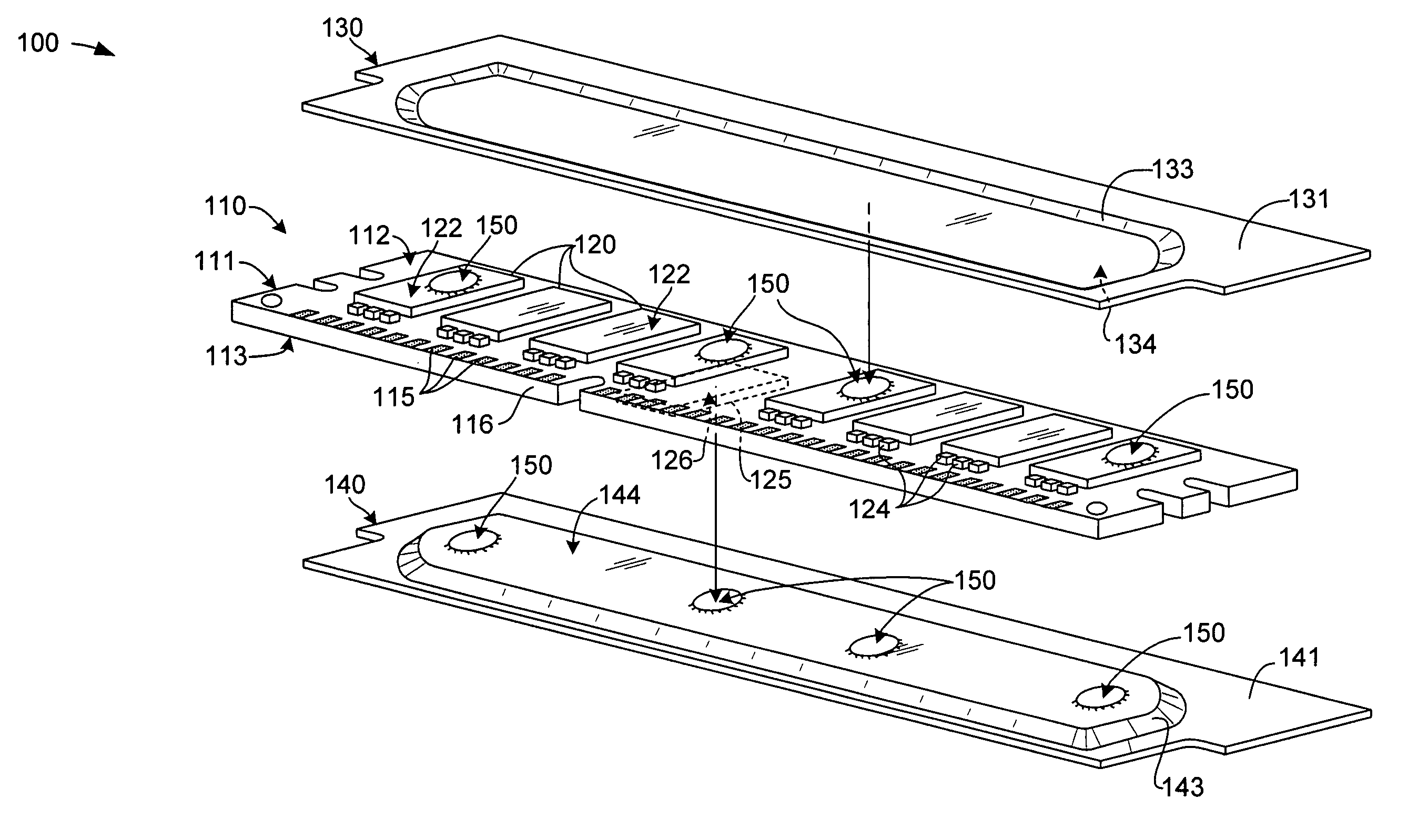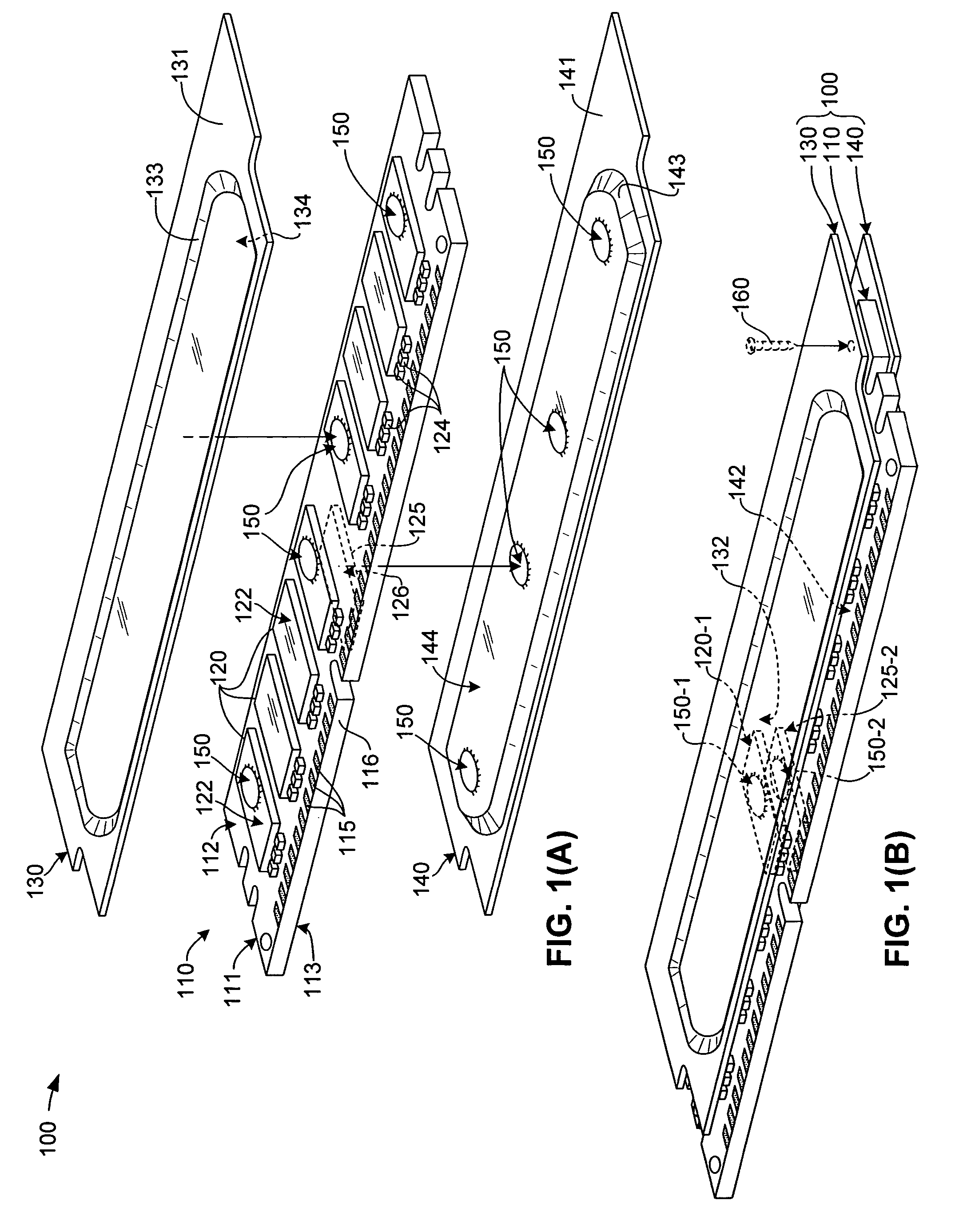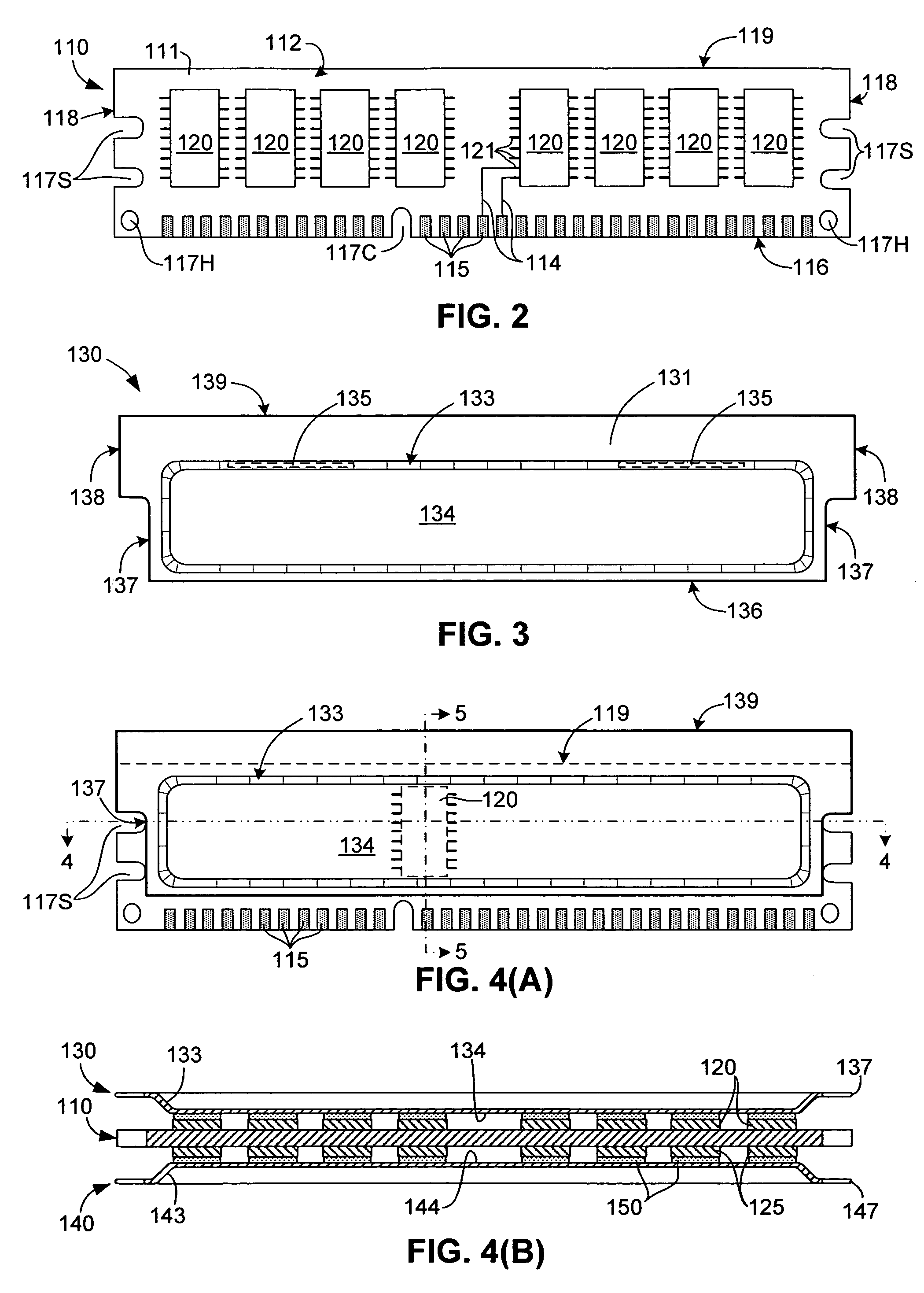Memory module assembly including heat sink attached to integrated circuits by adhesive
a memory module and heat sink technology, applied in the direction of cooling/ventilation/heating modifications, semiconductor/solid-state device details, and modification by conduction heat transfer, can solve the problems of unauthorized tampering (i.e., removal of heat-sink plates to access ic devices), and become more difficult to detect and difficult to remove. , to achieve the effect of low adhesion, low adherence, and easy manipulation of the cover and memory module pcba
- Summary
- Abstract
- Description
- Claims
- Application Information
AI Technical Summary
Benefits of technology
Problems solved by technology
Method used
Image
Examples
Embodiment Construction
[0030] The present invention relates to improvements in memory module assemblies (i.e., a memory module printed circuit board assembly (PCBA) and one or more heat-sink plates). The following description is presented to enable one of ordinary skill in the art to make and use the invention as provided in the context of a particular application and its requirements. Various modifications to the preferred embodiment will be apparent to those with skill in the art, and the general principles defined herein may be applied to other embodiments. Therefore, the present invention is not intended to be limited to the particular embodiments shown and described, but is to be accorded the widest scope consistent with the principles and novel features herein disclosed.
[0031] FIGS. 1(A) to 5 show a memory module assembly 100 according to a simplified embodiment of the present invention. Memory module assembly 100 generally includes a memory module PCBA 110 and one or more heat-sink plates 130 and ...
PUM
 Login to View More
Login to View More Abstract
Description
Claims
Application Information
 Login to View More
Login to View More - R&D
- Intellectual Property
- Life Sciences
- Materials
- Tech Scout
- Unparalleled Data Quality
- Higher Quality Content
- 60% Fewer Hallucinations
Browse by: Latest US Patents, China's latest patents, Technical Efficacy Thesaurus, Application Domain, Technology Topic, Popular Technical Reports.
© 2025 PatSnap. All rights reserved.Legal|Privacy policy|Modern Slavery Act Transparency Statement|Sitemap|About US| Contact US: help@patsnap.com



